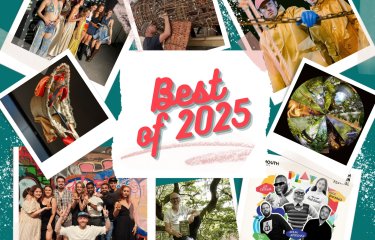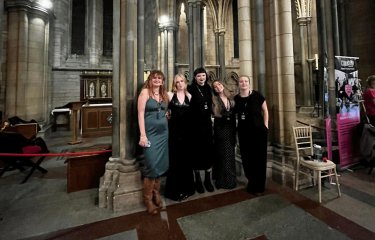Interior Design Online student launches visualisation business
06 November 2025

For London-based Interior Design BA(Hons) (Online) student Gianluca Onnis, what began as an interest in concept visuals has evolved into a thriving creative business. While studying with Falmouth, he founded Studio Noren, an architectural visualisation practice that transforms unbuilt spaces into compelling visual narratives. Balancing study and entrepreneurship, Gianluca shares how his course helped him refine his skills, build confidence and turn his creative vision into reality.
What inspired you to start Studio Noren while studying?
Studio Noren began quite naturally while I was studying interior design. I have always been drawn to concept visualisation, even in the early stages of the course when I was mainly experimenting with 2D visuals in Photoshop. During my final year, I wanted to push things further and explore new ways to bring ideas to life. That was when I started learning 3D rendering software, and I completely fell in love with the process. From there, Studio Noren was born. It became a space where I could keep developing that passion for turning design concepts into visual stories.
What drew you to architectural visualisation in the first place, and how has your background in interior design influenced your approach?
What first drew me to architectural visualisation was the storytelling side of design. I loved the idea of being able to communicate a space and its atmosphere before it even exists. My background in interior design has shaped the way I approach visuals. I do not just focus on how things look, but also on how they feel and how people might interact with the space. That design foundation helps me think about materials, light and composition in a more holistic way, so every image tells a story rather than simply showing a render.
What projects have you worked on so far with Studio Noren?
Most of my work with Studio Noren has focused on residential projects for an architecture studio based on the East Coast of the United States. I am still collaborating with them on a few ongoing projects. It is not commercial work, but I really enjoy it. There is something very satisfying about visualising homes and interiors that people will actually live in. Of course, there are lots of revisions along the way, which is part of the fun, but it has been a great learning experience and a chance to refine my style.
Setting up a business during your studies is a big step. What gave you the confidence to take that leap?
I started setting up Studio Noren during the Easter break because I wanted to use that time to focus on building everything from the portfolio to the social media presence. It was something I had been thinking about for a while, and I felt ready to give it a proper shape. I think the confidence came from realising how much I enjoyed the visualisation process during my final year. Once I saw how far I had come, I thought, why not take the next step and turn it into something real?
Were there particular modules on the course or tutors you worked with that helped you turn your creative practice into a viable business?
Every module played a part in shaping what eventually became Studio Noren. Each one helped me develop different skills, from design thinking to presentation and storytelling. I have to give a big shout-out to Stuart Watt, who was my tutor during the second and third year. He always gave great feedback on my visualisations and encouraged me to keep pushing them further, even suggesting I add a few extra visuals to each project.
What has been the most important thing you have learned on the course so far?
One of the most important things I have learned from the whole experience of studying design is patience. Creative ideas take time to develop, and so does your own style. I used to rush things just to get to the final result, but I have learned to enjoy the process more by experimenting, making mistakes and refining ideas along the way. That mindset has really helped me, both in design and in running my studio.
External links





